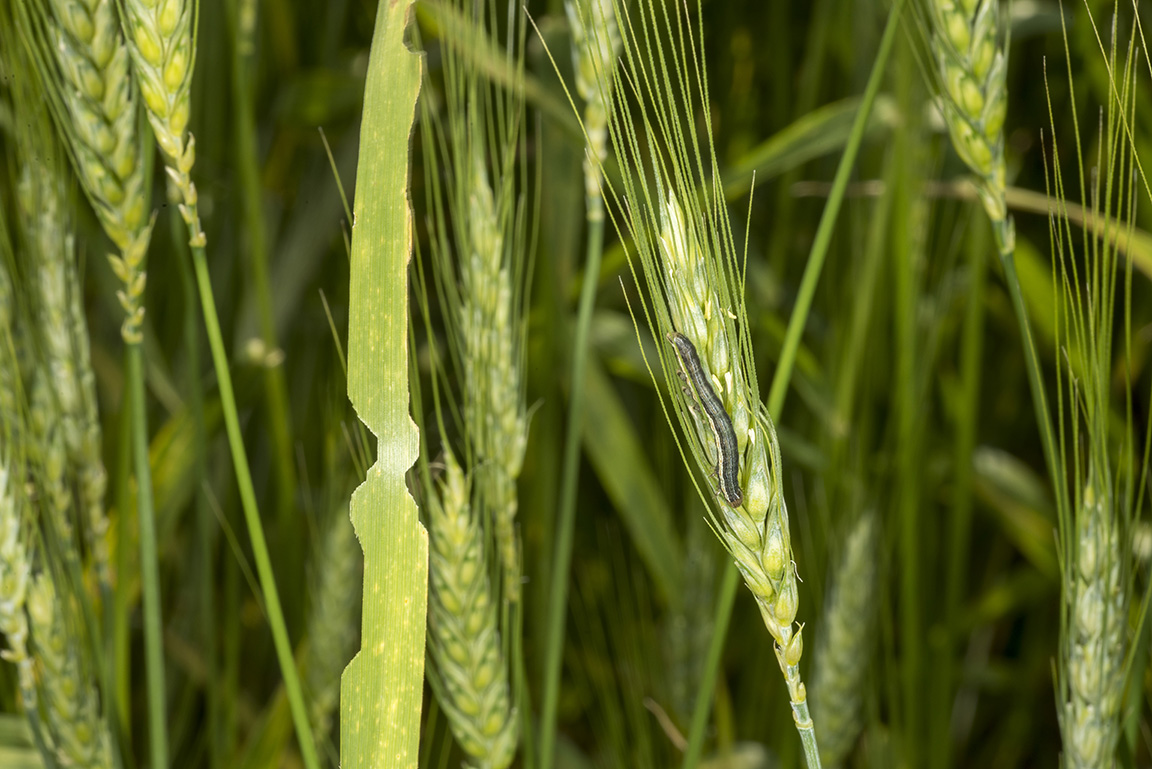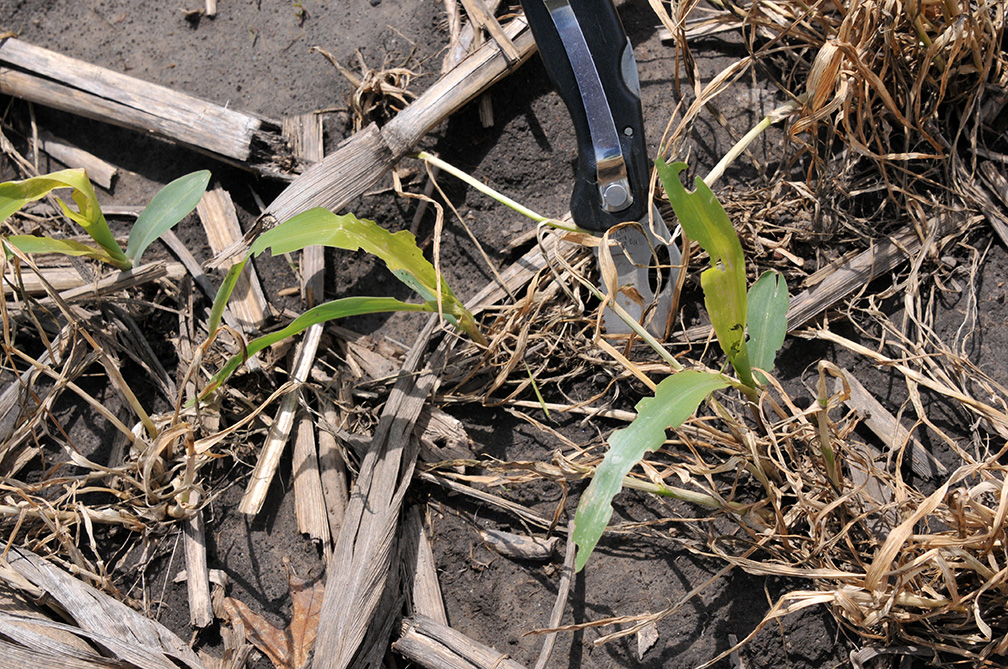Armyworm moth captures have varied this spring, with some being quite impressive (see “Armyworm Pheromone Trap Report”). High-risk crops should be monitored for the next several weeks. Moths prefer to lay their eggs on dense grassy vegetation (e.g., wheat, grass hay, and grass cover crops). Larval development has been slow with recent cooler temperatures, but will speed up with the current warming trend. The smaller caterpillars are rarely noticed, and usually just notch leaves. Larger worms, >0.75”, mean bigger appetites! As is usually the case with armyworm moths, larvae will be at different sizes because of the many flushes of moths.
Corn – Corn that has been no-tilled into, or growing adjacent to, a grass cover crop (especially cereal rye) should be inspected immediately for armyworm feeding in southern counties. Hatched larvae will move from the dead/dying grasses to emerging/emerged corn. Armyworm feeding, usually done at night, gives corn a ragged appearance, with feeding extending from the leaf margin toward the midrib. When larvae are numerous and/or large, damage may be so extensive that most of the plant, with the exception of the midrib and stalk, is consumed. A highly damaged plant may recover if the growing point has not been destroyed. If more than 50% of the plants show armyworm feeding, and live larvae less than 1-1/4 inches long are numerous in the field, control may be necessary. Larvae greater than 1-1/4 inches consume a large amount of leaf tissue and are more difficult to control. If armyworm are detected migrating from border areas or waterways within fields, spot treatments in these areas are possible if the problem is identified early enough. Seed-applied insecticides provide no protection from this pest, and although some Bt-corn hybrids may suppress small larvae, once larvae are large they offer no control. Monitoring and treatment when necessary are your only real control options here.
Wheat & Grass Pasture – Examine plants in different areas of a field, especially where plant growth is dense. Look for flag leaf feeding, clipped heads, and armyworm droppings on the ground. Shake the plants and count the number of armyworm larvae on the ground and under plant debris. They will often feed and be out in the open on cloudy or cool days. On sunny days, the armyworm will take shelter under crop residue or soil clods. If counts average approximately 5 or more per linear foot of row, the worms are less than 1-1/4 inches long, and leaf feeding is evident, control may be justified. If larvae are present and they are destroying the flag leaves or the heads, treat immediately.




